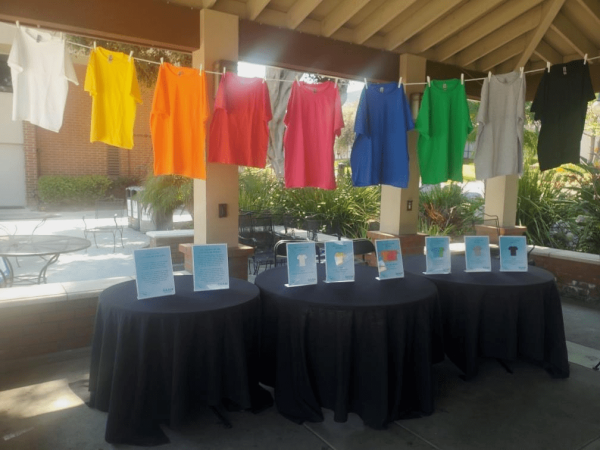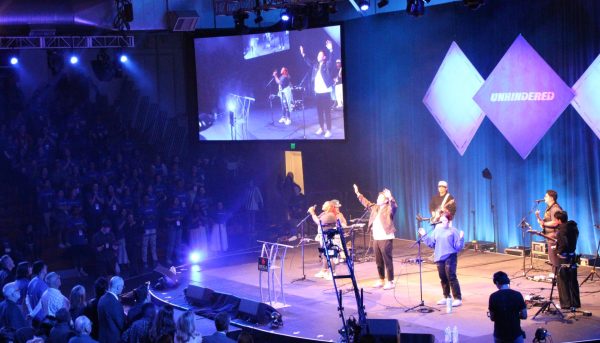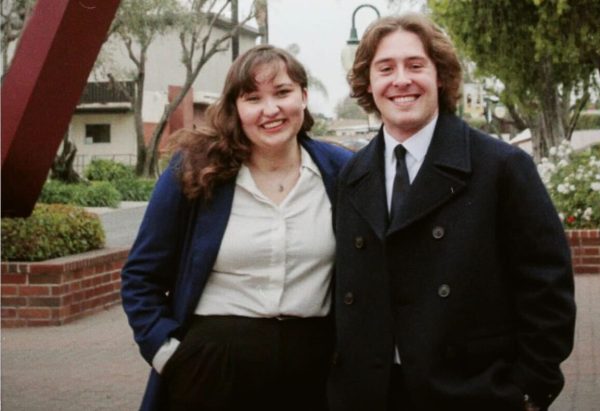Jesus Mural Forum Sparks Discussion
Phillip Wallace speaks as part of a panel of students and alumni at the Jesus mural forum held in Mayers Auditorium on Tuesday May 13. The event focused on speaking for the voice that has not yet been heard on the subject of the mural, specifically involving the issue of racial oppression.
May 14, 2008
Last night, a discussion regarding the Jesus mural was held in Mayers Auditorium. The auditorium was filled with over two hundred students and staff gathered to address the impact of the mural on the Biola community.
Liana Sims and Tabitha Verdick coordinated the event, which included a panel of students who gave different personal viewpoints regarding the Jesus mural. The panelists were alumni Randy Johnson and Phillip Wallace, juniors Michael Martin, Emily Johnson, Daniel Chacon, Verdick and sophomore Rosetta Riley.
Before opening the discussion, two articles written by two professors of the art department about the history of the mural were read to the audience. According to the articles, the Jesus mural, officially titled “The Word,” was painted by the famous mural artist Ken Twitchell in 1989 and finished in 1990. Twitchell was a devout Christian who wanted to honor Jesus through “The Word,” so he picked a Jewish model, appropriate of age and appearance. The coloring of his skin and the pages of the Bible were intended to evoke John 1:14, which talks about the incarnation.
The article also said when “The Word” was originally painted, a group of students went on a retreat and talked about its meaning and representation. Later, they decided to meet with the artist and talk about his intention for the mural. After more than five hours of discussion, Twitchell volunteered to pay to have “The Word” blasted off the wall, but the students backed down and the mural is still intact today.
According to co-coordinator Verdick, the Jesus mural discussion was held to promote a dialogue on a serious issue of refurbishing the Jesus Mural.
“There is lots of action being taken on the mural right now,” said Verdick. “We wanted to just give the Biola community the chance to voice their feelings about it and to unearth the deeper issue behind it, which is what the mural represents to the Biola students and to the world at large.”
One of the points brought up was that the Jesus Mural is not about a black and white issue, but it deals with the issue of the form of multiculturalism.
“I think that the Jesus mural is a piece of art, which should be accepted and embraced as an artistic expression, but I think that it represents a bigger issue in regards to the issue of how European influence, the church and Jesus in general influenced so many other people, even over the years it has been oppressive,” co-coordinator Sims said.
Junior Andrew Bolinger said that he really liked that this event was held, but he wished that there was a little bit more time to have the right information on what’s happening with the mural, including whether it will be refurbished or torn down.
“I think all very important facts are sort of left out,” said Bolinger. “It would have been helpful to have professors as moderators, ‘cause things were intense here, and it could have been handled better by someone who is a little bit more authoritative.”
Panelist Martin said this event was about hearing opinions of different students expressing hurts and pain caused not just by the mural itself but by what comes with the mural.
“I would like to see continued dialogue of understanding: how this is making people feel and finding deeper issues that go beyond the color of the Jesus’ skin,” he said.







